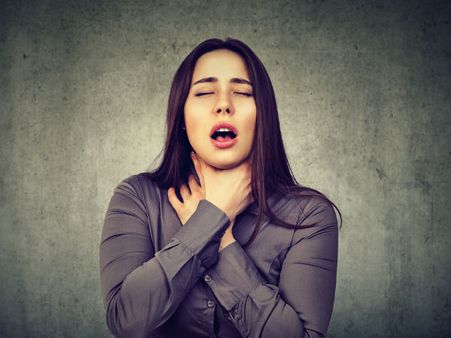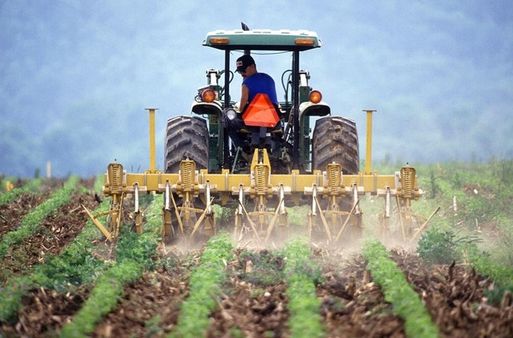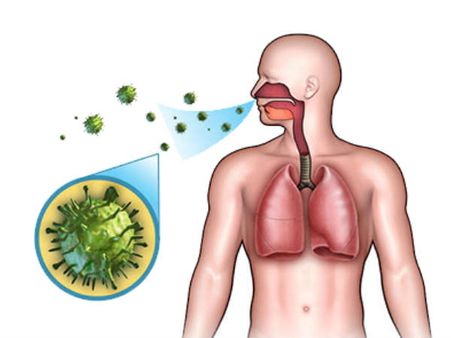Just In
- 6 hrs ago

- 7 hrs ago

- 11 hrs ago

- 14 hrs ago

Don't Miss
- Movies
 Vicky Thakur Criticizes AP Dhillon for Disrespecting Musical Instrument on Stage
Vicky Thakur Criticizes AP Dhillon for Disrespecting Musical Instrument on Stage - Finance
 8 Tata Group Stocks To Buy That Will Pay Dividends Soon, Q4 In Focus; Are You Invested?
8 Tata Group Stocks To Buy That Will Pay Dividends Soon, Q4 In Focus; Are You Invested? - Sports
 Australia Women Cricketer Ashleigh Gardner gets engaged to partner Monica Wright
Australia Women Cricketer Ashleigh Gardner gets engaged to partner Monica Wright - News
 Iran Embassy In Paris Cordoned Off Following Reports Of Suspect With Explosives
Iran Embassy In Paris Cordoned Off Following Reports Of Suspect With Explosives - Automobiles
 Suzuki Swift Hatchback Scores 4 Star Safety Rating At JNCAP – ADAS, New Engine & More
Suzuki Swift Hatchback Scores 4 Star Safety Rating At JNCAP – ADAS, New Engine & More - Education
 NLSIU Announces the Rajiv K. Luthra Foundation Grant
NLSIU Announces the Rajiv K. Luthra Foundation Grant - Technology
 Dell Introduces AI-Powered Laptops and Mobile Workstations for Enterprises in India
Dell Introduces AI-Powered Laptops and Mobile Workstations for Enterprises in India - Travel
 Journey From Delhi To Ooty: Top Transport Options And Attractions
Journey From Delhi To Ooty: Top Transport Options And Attractions
COVID-19 And Pulmonary Fibrosis: Causes, Symptoms, Risk Factors And Treatments
According to a news report, patients cured of COVID-19 at Mumbai's KEM hospital have reported a serious lung condition called pulmonary fibrosis, after being discharged a month earlier. The hospital committee has reported around 22 such cases. The report also mentions that none of the patients has a history of lung injury and was also not facing any breathing problems at the time of discharge.

COVID-19 is a viral disease that mainly impacts the lungs. However, it is still unclear how those patients got pulmonary fibrosis, even when they recovered from the condition. The only common thing among them were all had pneumonia at the time of their treatment for COVID-19.
In this article, we will discuss pulmonary fibrosis, its causes, symptoms, treatments and other details. Take a look.


What Is Pulmonary Fibrosis?
Pulmonary fibrosis is a progressive and chronic lung condition that causes scarring in the lung tissues. The scarring leads to low oxygen levels in the blood, making a person unable to breathe properly, especially during exercise or walking. [1]
Pulmonary
fibrosis
is
not
a
single
disease
but
consists
of
a
large
number
of
lung
diseases
that
include
scar
tissue
in
the
lungs.
Several
factors
are
responsible
for
the
scarring
and
a
medical
expert
is
sometimes
unable
to
point
out
just
a
single
cause.
From
the
aforementioned
report,
COVID-19
infection
is
also
considered
one
of
the
risk
factors
for
pulmonary
fibrosis.
Like diabetes or other chronic diseases, pulmonary fibrosis cannot be treated and only its symptoms can be managed to improve the quality of life.


COVID-19 And Pulmonary Fibrosis
Pulmonary fibrosis can develop as a result of chronic inflammation to the lungs due to Acute respiratory distress syndrome (ARDS). Several reports suggest that around 40 per cent of people with COVID-19 were admitted to intensive care due to the development of ARDS. [2]
Possible factors such as cytokine release due to COVID-19 viral antigen, high airway pressure, drug-induced lung toxicity and acute lung injury due to exposure to high levels of oxygen in ill patients can be the possible cause.
It was also noticed that the average age of people who were admitted due to severe COVID-19 was more compared to people admitted during SARS and MARS. This shows that advancing age can be one of the risk factors for pulmonary fibrosis induced due to severe COVID-19.
Pulmonary fibrosis leads to declining of the lung functions and quality of life. Though a person gets recovered from COVID-19 after reduction in viral load, the development of fibrosis cannot be prevented due to the removal of the virus. This is because even a small amount of residual but non-progressive fibrosis can increase the mortality risk in older adults with COVID-19, especially those who have a pre-existing lung disease.
Therefore, the long-term results of COVID-19 are speculative and need further study.

Causes Of Pulmonary Fibrosis
When the air sacs of the lungs called alveoli gets stiff or thick due to scarring, the oxygen supply to the bloodstream gets difficult that causes pulmonary fibrosis. Some of the causes of the scarring of the lung tissues include:
- Radiation [3]
- Autoimmune disorders such as lupus and rheumatoid arthritis.
- Environmental and occupational factors such as exposure to silica dust, moulds, hard metal dust or coal dust. [4]
- Infections such as hepatitis or herpes.
- Chemotherapy or anti-inflammatory drugs.
- Medical conditions such as pneumonia and dermatomyositis.
- Tobacco smoke
Note: Pulmonary fibrosis is called idiopathic pulmonary fibrosis when no particular cause can be identified. In some cases, the condition is hereditary.


Symptoms Of Pulmonary Fibrosis
The severy of the symptoms of pulmonary fibrosis varies from person to person. In some people, the symptoms get progressed very slowly while in others very quickly.

Risk Factors Of Pulmonary Fibrosis
The factors that increase the risk of pulmonary fibrosis include:
- Gender[7](Men have increased risk)
- Age (Age group 40-70 has increased risk)
- Smoking
- An occupation that involves mining, construction or farming.
- Exposure to radiation
- Chemotherapy treatment
- Having a history of pulmonary fibrosis.
- Having an autoimmune disorder. [8]


Complications Of Pulmonary Fibrosis
Untreated pulmonary fibrosis can cause complications such as:
- Respiratory failure
- Lung cancer [9]
- Pulmonary hypertension
- Heart failure
- Collapsed lung
- Severe infections of the lungs


Diagnosis Of Pulmonary Fibrosis
The diagnosis of pulmonary fibrosis is often confused with other lung conditions such as pneumonia or bronchitis. [10] Common diagnosis methods include:
- Blood tests: To identify infections or an autoimmune condition.
- Blood oxygen level test: To evaluate the amount of oxygen in the blood.
- Lung function tests: To find out whether the lungs are working properly or not.
- Sputum sample test: To detect if infections (bacteria or virus) are the cause.
- CT scan: To look for signs of lung damage due to pulmonary fibrosis.
- Biopsy: To exactly determine the scarring of the lungs and rule out other lung diseases.


Treatments Of Pulmonary Fibrosis
Treatment methods are mainly to manage the progression of the condition. They include:
- Medications: To slow the progression of pulmonary fibrosis by managing symptoms. [11]
- Prednisone medications: To suppress the immune system if an autoimmune condition is the cause of pulmonary fibrosis.
- Antifibrotic drugs: To reduce or minimise the further scarring of the lung tissues.
- Oxygen therapy: For easier breathing.
- Rehabilitation programs: To learn breathing techniques and other factors to improve lung efficacy.
- Lung transplant: Can be done only if the above treatment methods do not work out. [12]

Prevention Of Pulmonary Fibrosis
- Quit smoking
- If your occupation involves mining, farming, construction or exposure to radiation, silica dust or other harmful pollutants, take precautionary measures to prevent the entry of those pollutants in the respiratory system.
- Maintain a balanced diet.
- Exercise regularly or get involved in physical activities.
- Change your lifestyle habits to cope well with the condition and minimise its progression.


Common FAQs
1. What is the life expectancy of a person with pulmonary fibrosis?
Usually, the life expectancy of a person with pulmonary fibrosis is 3-5 years after the diagnosis. But due to the advancement in medical science, several ways have been discovered to increase the lifespan of people with the condition.
2. What are the signs of end-stage pulmonary fibrosis?
The signs of end-stage of pulmonary fibrosis include persistent cough, prolonged chest pain, weight loss, a feeling of anxiousness and disturbance in sleep patterns.
3. How do pulmonary fibrosis patients die?
Patients with pulmonary fibrosis die mainly due to right-sided heart failure, increased pressure to the lungs' arteries (pulmonary hypertension) and lung cancer.
-
 healthCOVID Surge In India: Do You Need A COVID-19 Booster Shot?
healthCOVID Surge In India: Do You Need A COVID-19 Booster Shot? -
 disorders cureCommon COVID Symptoms In Fully Vaccinated Individuals: What You Should Know
disorders cureCommon COVID Symptoms In Fully Vaccinated Individuals: What You Should Know -
 wellnessMild COVID Linked To Life-Threatening Blood Clots, Increased Risk Of Cardiovascular Disease; Study
wellnessMild COVID Linked To Life-Threatening Blood Clots, Increased Risk Of Cardiovascular Disease; Study -
 wellnessCOVID-19 Variants In India: New COVID Variant May Pose Threat To Elderly People
wellnessCOVID-19 Variants In India: New COVID Variant May Pose Threat To Elderly People -
 basicsCovid-19 Linked To Early Onset Of Periods: What You Need To Know
basicsCovid-19 Linked To Early Onset Of Periods: What You Need To Know -
 wellnessCOVID XBB Variants Of Omicron In India: What You Should Know
wellnessCOVID XBB Variants Of Omicron In India: What You Should Know -
 disorders cureNew Omicron Subvariant BQ.1 Detected In Maharashtra: What You Should Know
disorders cureNew Omicron Subvariant BQ.1 Detected In Maharashtra: What You Should Know -
 disorders cureOmicron BF.7 In India, Risk Of Fresh Wave During Diwali: What You Should Know
disorders cureOmicron BF.7 In India, Risk Of Fresh Wave During Diwali: What You Should Know -
 wellnessCoronavirus Residues Might Be Causing Long COVID: New Study
wellnessCoronavirus Residues Might Be Causing Long COVID: New Study -
 wellnessCentury-Old TB Vaccine Could Be Effective Against Covid-19 And Other Infections: New Study
wellnessCentury-Old TB Vaccine Could Be Effective Against Covid-19 And Other Infections: New Study -
 disorders cureCovid-19 Patients At Risk Of Neurological & Psychiatric Conditions Two Years After The Infection: New Study
disorders cureCovid-19 Patients At Risk Of Neurological & Psychiatric Conditions Two Years After The Infection: New Study -
 wellnessCOVID In Smokers: An Expert Explains
wellnessCOVID In Smokers: An Expert Explains


 Click it and Unblock the Notifications
Click it and Unblock the Notifications





